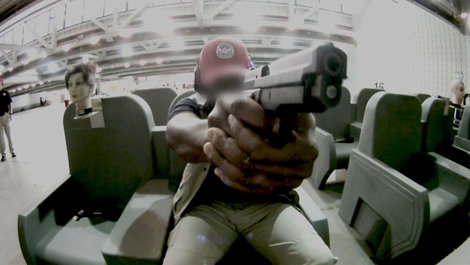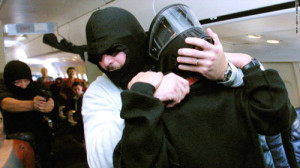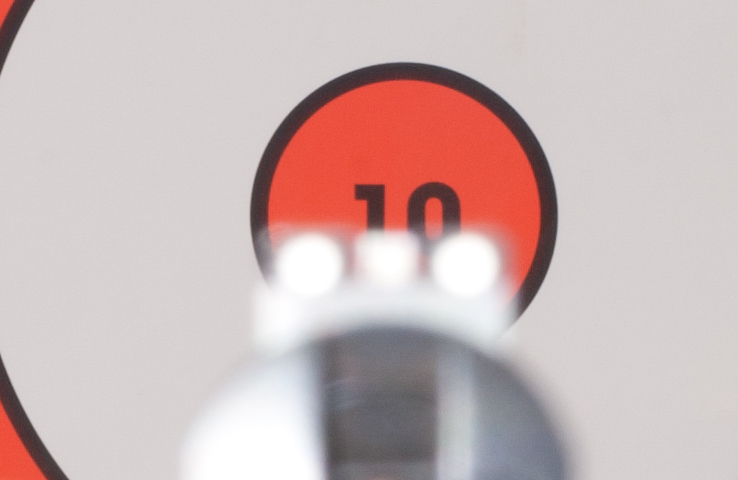Inside USAF’s Office Of Special Investigations
[su_heading size=”25″]Guardians Of The Air Force – Part I of II[/su_heading]
‘The Eyes Of The Eagle’
STORY BY TROY TAYSOM
[su_dropcap style=”light” size=”5″]I[/su_dropcap]n 1947 the world was rebuilding after the most devastating global conflict we’ve ever known had ended. The importance of air power had been proven with the destruction of Tokyo, Nagasaki, Hiroshima, Berlin and Hamburg. The importance of owning the skies above the battlefield led our nation to form a new branch of the military; on September 18, 1947, the United States Air Force was born.
Just one year later, a new career field was created within the USAF. Modeled after the Federal Bureau of Investigations, the Air Force Office of Special Investigations (AFOSI or OSI) was formed in August of 1948. The impetus for its formation would propel OSI agents to the forefront of professional fraud investigations.

AT THE END OF WWII, Major General Bennett E. Meyers, in charge of procurement, fell victim to one of the seven deadly sins – greed. He saw how much money was being spent and how little oversight was present, and took advantage of his position. An anonymous letter floated around the military and the FBI for years, written by a junior-ranking officer explaining what this general was up to. Legend says that the letter remained largely ignored because of unclear jurisdictional matters. The letter finally saw the light of day during Senate hearings, and exposed the inadequate system that the Air Force had for such investigations. In April 1948, this Senate committee made a recommendation: “A competent investigative unit should be established at once to act as a watchdog over the huge and continuing expenditure of public funds by that important arm [Air Force] of the military establishment.” OSI was formed with a three-pronged dictate: investigate fraud, criminal activity and perform counterintelligence.

AFOSI FUNCTIONS MUCH LIKE the FBI, but only within the confines of the mission of the Air Force. Special agents (SA) don’t wear uniforms and rank is hardly spoken of. AFOSI reports directly to the Inspector General of the Air Force, and is not beholden to base and wing commanders like all other Air Force personnel. It’s not because they are privileged or entitled; it’s to ensure a safety gap exists in the event that the base or wing commander is the one under investigation. This separation ensures that rank is not used to intimidate the enlisted agents as they investigate potential crimes.

It shouldn’t come as a surprise that the number one requested career field by newly commissioned 2nd lieutenants is pilot training. However, it may surprise some that the second most requested field is OSI. The amazing thing is that the field has less than 3,000 agents and just over 300 of those are officers. The majority are enlisted personnel, followed closely by civilians.
SAs go through a rigorous selection process that includes an exhaustive background investigation, an in-depth polygraph and then basic federal agents’ school in Glynco, Ga. After basic training, the SAs split off into their own OSI academy to learn the capabilities and pillars under which OSI operates. According to OSI, their cornerstones are:
• Vigorously solve crime;
• Protect secrets;
• Warn of threats;
• Exploit intelligence opportunities;
• And operate in cyberspace.

AGENTS HAVE A PLETHORA of weapons they use in the field. From the early 1950s until the late 1970s OSI agents carried .38 Smith & Wesson Chief’s Special (which was renamed the Model 36) 3-inch revolvers. In the late 1970s, OSI decided to switch to the M1911A1 .45 ACP. They acquired surplus guns that the Navy had deemed unserviceable and customized them. The barrel and slide were shortened by three quarters of an inch and the frame by a half inch. The shortened frame required a custom-made, six-round magazine. Many agents praised the change to a better caliber, but the gun was plagued with slide cracks, failures to feed, as well as stove-pipe failures, according to one retired agent I spoke with. It is estimated that it only cost the Air Force $100 per gun to make changes to the .45s, making the project highly economical.
The Colt proved to be a good stop-gap between the old 3-inch .38s and the new 9mm adopted by the armed forces in 1985. Not long after the military adopted the Beretta M9, OSI started issuing them to the SAs. The M9 was liked by many and hated by probably just as many. For an OSI agent the biggest issue was concealability. The M9 was not designed to be carried as a concealed firearm. It was a battlefield back-up gun. OSI needed something more in line with their missions, including undercover investigations and protective details.

Ultimately OSI adopted the Sig Sauer M11, or P228 in civilian terms, just like US Army pilots and other aircrews. However, in November 2015, the AFOSI commander, Brigadier General Keith M. Givens, announced a new weapons policy, which allowed SAs to carry privately owned weapons (POWs) as long as they are on the list of 27 approved models. Brig. Gen. Givens explained, “One of the main driving forces behind this change was the desire to provide each agent the option to employ a weapon that best suits their individual body type and hand size for preference and concealment concerns. Now, OSI Special Agents will have that flexibility.”
Agents are also trained with the Remington 870 and the M4. Agents who deploy in counterinsurgency rolls have the chance to qualify with other weapons like the M203, M240 and M249.
Agents working protective details have used everything from Remington 870s with a folding steel stocks to Uzis and MP5s, depending on what part of the world they are in.
Once and SA has completed training they are assigned to a detachment somewhere in the world to undergo their probationary period. During this time a more senior SA will work with them on criminal investigations, including fraud, narcotics, sexual assaults, murders and any other serious felonies that present themselves.
AFOSI HAS A REPUTATION of working closely with their civilian counterparts. One famous incident involved three airmen from Hill Air Force Base, Utah. The airmen robbed a hi-fi-type store in Ogden, Utah, a town close to the base. During the robbery they held several people hostage and committed heinous crimes, including forcing some to drink liquid Drano in hopes of killing the witnesses. When this didn’t work they shot each of the hostages. One man still didn’t die and they resorted to kicking a pen into his ear and choking him – he lived and crawled outside where he was found. A tip from a fellow airman led police to Airman Dale S. Pierre, then 21 years old, and Airman William Andrews, age 20. Evidence was recovered from a dumpster next to the base and with the help of OSI, a search warrant was issued and executed in the barracks. The stereo equipment was recovered, and the two stood trial and were convicted on multiple felonies including capital murder. Pierre was executed in 1987 and Andrews in 1992.
Former SA Nathan Sessler told me that during his time at Pope Airfield, N.C., he worked closely with the Fayetteville Police Department to learn more about street gangs. Street gangs wouldn’t seem to be a problem in the Air Force, but SA Sessler pointed out that the military is a microcosm of society – if society has it, the military has it too, just on a smaller scale. With his new training he was able to identify members within the Air Force and get the local police to verify gang membership.

In Texas, OSI found that members of the “Bloods,” a known and violent gang, had joined the Air Force and were working in the post office on base, using it to smuggle and transport narcotics.
OSI has always excelled at investigating fraud. Back in the late 1970s and early 1980s, a chief master sergeant stationed at Andrews Air Force Base, Md., was investigated for stealing flight-line generators and using them to help high-ranking officers build summer cabins in the countryside.
At around the same time a master sergeant working in a supply supervisory role was caught using government funds to furnish his private rental units. The investigation uncovered $200,000 worth of ill-gotten furniture, fixtures and equipment in his apartments.
DURING MY INTERVIEW with SA Sessler he mentioned a case where a topographical-map printer, valued at $13,000, was stolen from an air evacuation medical unit. The printer didn’t turn up until the spouse of an airmen was involved in a domestic battery. She told his commanding officer and police that her husband had stolen a printer from his squadron. SA Sessler went to the home to investigate and located the printer. What came next shocked the seasoned OSI veteran. The wife casually asked, “Would he (the husband) be in trouble if he had stolen other stuff from the Air Force?” “Yes, ma’am,” responded Sessler. She led him to the couple’s three-car garage that was packed floor to ceiling and wall to wall with stolen and misappropriated merchandise. The man was an E-7 with 19.5 years of service and was a unit purchaser with a no-limit government credit card. He showed his subordinates how to reconcile the books by simply selecting the approve-all button in the software. In 18 months the master sergeant had stolen $392,000 worth of material. His subordinates were charged with dereliction of duty and he received an eight-year imprisonment, loss of rank, forfeiture of pay and a bad-conduct discharge.

OSI has also jumped into the world of computer crimes as well as counterinsurgency. These crimes include everything from attempts to steal sensitive data to child pornography. SA Sessler was one of the agents who got a confession from an E-6 who had been creating and distributing child porn while stationed in the US. He was arrested at Pope AFB. Airman Nathan Wogan was sentenced to life in prison, thanks to the efforts of AFOSI agents like SA Sessler.
UNTIL 9/11, OSI WASN’T HEAVILY involved in counterinsurgency. During the war on terror many OSI agents were sent to the front lines to work human intelligence (HUMINT). This is no different than working narcotics cases with informants and insiders. In fact, OSI was able to get one of the most prolific improvised explosive device (IED) makers in southern Iraq off the streets. Several SAs had been discussing problems they were having in the area with IEDs. One of the agents suggested they work the case just like they would for narcotics. They did and worked their way up the ladder, so to speak, and were eventually buying directly from the IED maker, ultimately taking him into custody. After the operation, the number of IEDs in that area dropped to nearly zero.
In December of 2015, four OSI agents were killed doing counterinsurgency work in Afghanistan. Even though they are not considered front-line units like Rangers, Special Forces, SEALS and Delta Force, the job that OSI agents do is vitally important to the safety of our air assets and the lives of those who serve in the Air Force. Make no mistake, however, theirs is a dangerous job and always will be.
In OSIs 68-year history, they have lost 14 agents in the line of duty – four in that single day in 2015. ASJ
Editor’s note: Next issue, in part II of this series, we will profile other very important USAF law enforcement agencies that protect military assets and help keep our country safe.
Author’s note: Special thanks to the following retired OSI agents for their tremendous help with this article: Mike Brunson, Steve Rivers, Nathan Sessler, Michael Taysom, Bill Yurek and many others.




